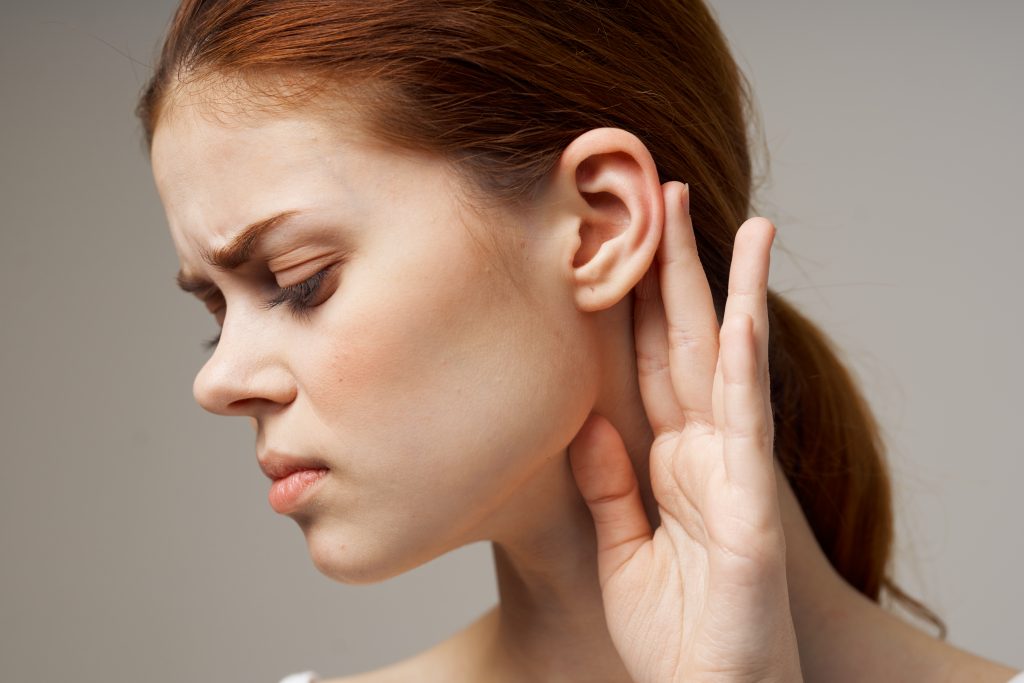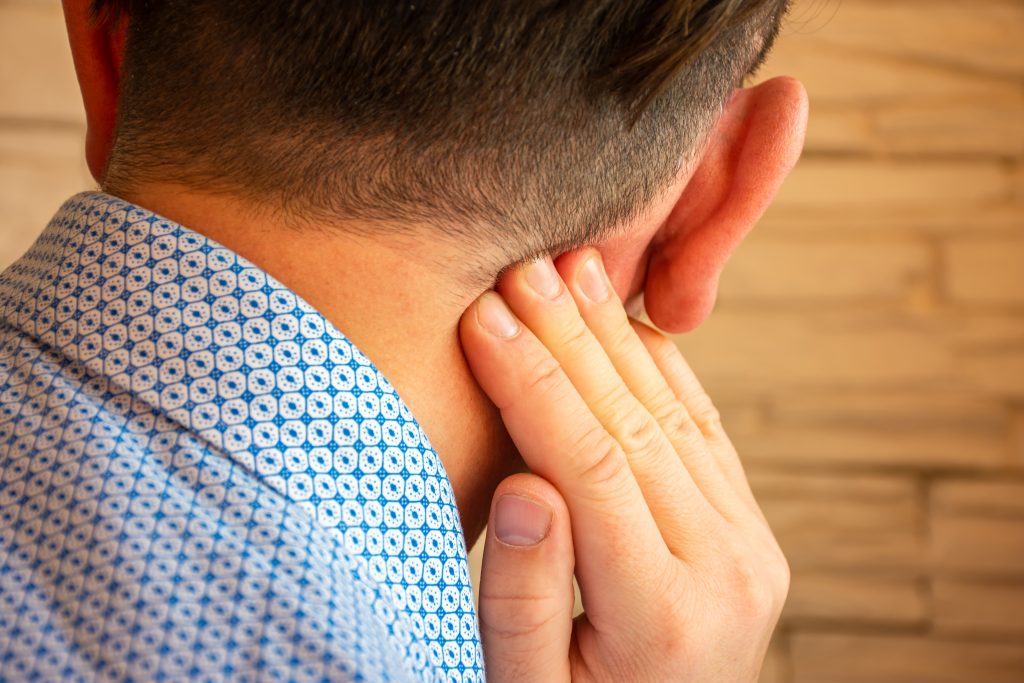August 5, 2022
Headache Behind the Ears: Causes, Treatments, and More
You may have experienced a headache in your life. Headaches are a common and debilitating collection of nervous system disorders, affecting people of all ages, races, and socioeconomic circumstances. Women suffer more headaches than men. Debilitating headaches can have a significant impact on your quality of life.
Over three hundred types of headaches can occur, and most do not need you to visit a specialist. The common headaches include migraines, tension headaches, and cluster headaches. These primary headache disorders make up 98% of most headaches.
Common Causes
Occipital neuralgia: Inflamed or injured nerves that innervate your scalp cause occipital neuralgia. Pain from this source can be piercing, throbbing, or severe in your upper neck, back of your head, or behind the ears. The pain is relieved by anti-inflammatory and pain medications. Local nerve blocks and muscle relaxants can offer added benefits. In cases of severe neck pain, your physician can inject corticosteroids into the affected area of pain. Many of the common warning signs of occipital neuralgia are comparable to migraines and other headache disorders. Diagnosis begins with a visit to your primary care physician. An occipital nerve block can confirm the diagnosis.
Mastoiditis: The mastoid bone is behind your ear, and when inflamed or infected, pain develops. Antibiotics can treat this bacterial infection. Signs of mastoiditis include redness, swelling, ear drainage, headaches, fever, and loss of hearing.
Temporomandibular joint disorder (TMJ) is pain caused by a misaligned or injured joint or a joint affected by arthritis. These may compromise the joint and movement. Pain relievers, oral splints, and physical therapy can help treat this disorder. Grinding and cracking sensations may occur when moving your mouth. Chewing can be difficult, and pain is a common symptom.
Dental problems: Dental caries (cavities) can cause referred pain, leading to headaches. Infections in your teeth and jaw can cause pain behind the ears.
How to Prevent a Headache Behind Your Ears
You may not have the ability to avoid getting a headache, but the following tips may help you reduce their occurrences.
- Avoid handheld devices. Prolonged use of devices places your neck at a downward slant.
- Keep your posture in check. Extended slouching or unchanged positioning of your neck and shoulder position can lead to nerve damage and pinched nerves.
- Meal consistency. Missed meals or skipping meals can lead to headaches.
- Schedule breaks. Brief periods of standing or taking a walk can help prevent stiffness when working at a desk for a significant period.
- Sleep consistency. Quality sleep prevents stress and fatigue, both known risk factors for the onset of headaches.
Why Do I Get a Headache Behind My Ears?
The primary causes of pain in your head behind the ears include infection, inflammation, or injury/trauma.
What Are the Symptoms of Headaches Behind the Ears?
Headaches behind the ears often depend on the underlying cause or condition. In a general sense, headaches share a common set of symptoms. These include unilateral or bilateral head pain, photosensitivity (light sensitivity), burning, throbbing pain, pain behind the eyes, tenderness in the scalp, and pain that comes from the movement of the neck. Head pain behind the ears can depend on the region/tissue affected, including the ear, bone, muscle, nerve, or joints.
Diagnosing the Problem
If you are suffering from pain behind your ear, A practical initial step is to contact your primary care physician. Your doctor will ask you to provide a brief history when you visit the office for a complaint of headaches behind the ears. This includes the onset and type of symptoms you are experiencing. This visit will include a complete medical history, earlier surgeries or past medical conditions that required treatment, and any current medications.
Your physician will do a physical exam, which may involve a visual and physical inspection of where the pain is located. This exam will include your ears, jaw, mouth, neck, nerves, lymph nodes, and skin next to your face and scalp. The medical professional will press on the base of the skull to assess and identify the area of pain. If warranted, your physician may order detailed imaging. This may include computerized tomography (CT) or magnetic resonance imaging (MRI) to view any pathology within your brain with three-dimensional images of the internal structures. If there are no signs of infection, your physician can rule out conditions such as mastoiditis.
 Your physician may ask you:
Your physician may ask you:
- Can you locate the pain?
- Does the pain radiate?
- Can you rate your pain? (10-point scale)
- Is the pain constant or intermittent?
- Does anything help the pain?
- In addition to the pain behind your ears, are you having any other symptoms(Hearing loss, rash, or fever)?
How Do You Treat a Headache Behind the Ears?
If a headache develops, a handful of simple measures at home may provide relief. Dimming the lights and placing ice where the pain is located can provide relief. However, if pain persists or worsens, it is always recommended to talk to your primary care provider.
When Pain Behind Your Ears Is an Emergency Condition
You should seek urgent medical attention if the pain behind your ears includes:
- Neck stiffness
- High fever
- Facial paralysis
- Confusion
- Ear drainage
- Swelling or warmth behind the ears
- Weight loss
- Neck mass
When to Seek Out a Professional
A professional should evaluate any prolonged discomfort to obtain a proper medical diagnosis. Localized headaches behind the ears are less common than other types of headaches. Though less common, a handful of reasons exist for their occurrence.
A reasonable assumption might be that when you experience pain near your ear, it might be due to an infection within your external ear or inner ear canal. Within human pathophysiology, the ears share underlying nerves with several muscles in your shoulders, neck, and head. Joint inflammation, dental infections, or nerve-related headaches can be the underlying cause of the discomfort behind your ear.
Regardless of the underlying reason, headache pain localized posterior to the ear may not be a serious illness, but you should not ignore the pain. Any pain that persists longer than two or three days, you should seek medical attention to help find the underlying cause.
Will I Need to Follow Up?
Visit our website today to request an appointment if you need help relieving your headache behind the ear. Regular follow-up with your doctor ensures that you are getting the correct and effective care. These simple steps will help you and your doctor diagnose, treat, and manage headaches behind the ears.
DISCLAIMER
The information featured in this site is general in nature. The site provides health information designed to complement your personal health management. It does not provide medical advice or health services and is not meant to replace professional advice or imply coverage of specific clinical services or products. The inclusion of links to other web sites does not imply any endorsement of the material on such websites.
Ready to become your healthiest self?
Get tips delivered to your e-mail inbox every month. Let’s get happier and healthier together!



